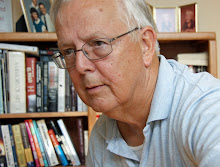Here is another set of notes from a Penny Sanseveri teleconference, this one entitled “Book Signing Gold.” Again, she knows I am posting this information. Penny owns
Author Marketing Experts and provided this information for free. Thank you, Penny.
Book signings are boring. Where you spend your time selling books is important. Selling eight books at a signing is pretty average.
People don’t want to be sold. They want to know what is in it for them to buy and read the book. Think outside the bookstore. Bookstores don’t like authors blanketing the area. The first event you have is good for 90 percent of your audience. Subsequent events yield less.
Friends and relatives don’t always buy your book.
Seasonal angles allow you to plan events. If a bookstore has a newsletter, try to get into it—at end of the month if possible, to maximize your exposure in the issue. Contribute to the newsletter if that is possible. If a bookstore has a community relations manager, that is the person to contact. For self-published authors, it may be necessary to leave copies on consignment.
Specialty stores are good. When you make arrangements, send a confirmation letter including info on how to obtain or reorder copies of the book. If possible, find out who is on their media list.
A 2-3 hour session is good, as well as a 20-30 minute talk.
Barnes & Noble stores sometimes have an “author’s night.” Try to partner with them.
Consider collaborating with another author on a “buddy system.” event. Mixing genres is okay. Consider promotional items such as bookmarks, bag stuffers, etc.
Spread out signings in a given area over time.
Build a relationship with the stores. Be friendly.
Regional promotion can be very helpful.
Publishers buy shelf space and floor space in bookstores.
Penny will also offer an event concerning signings outside the bookstore.
Stores may do some posters, but they often allow you to put up your own.
Instead of requesting a review by local media, pitch an idea for a feature. Signings can be used to generate local media attention.
Rule of Seven: You need 7 exposures to get people to recognize and purchase the book.
If you have a newsletter, make sure people sign up for it.
Craigs List is a great place to post free events. On the day of an event, fax the media’s assignment desk, and let them know why people should attend.
Bring copies of your book in your car. Don’t assume that copies of your book will be available at an event. Bring your own copies just in case someone forgot to order. “Autographed by author“ stickers are worthwhile. Autographed books are a great gift idea.
Always show up early and stay late at events. Marketing is about movement and message. You do not necessarily have to read a chapter of your book; you can always talk about the craft of writing. Be really creative.
Passion sells. Be engaged in your topic. Show you believe in it. Record yourself for the first few sessions. Don't overwhelm the audience with info. Keep presentations simple. Practice. Get honest critiques before hand.
The best way to sell a book is to talk about it. You can even sell at Starbucks—best to go through the local stores rather than through Corporate.
Be sure to send thank-you notes.
Typical discounts: 40% at bookstores, and 20% at non-bookstore events.














